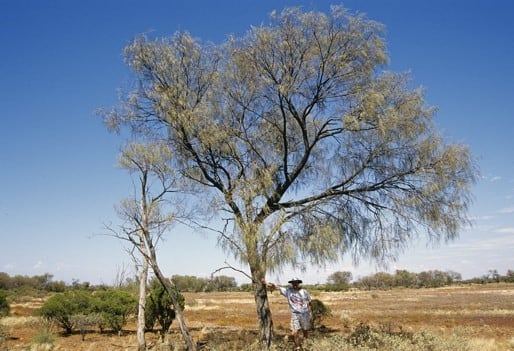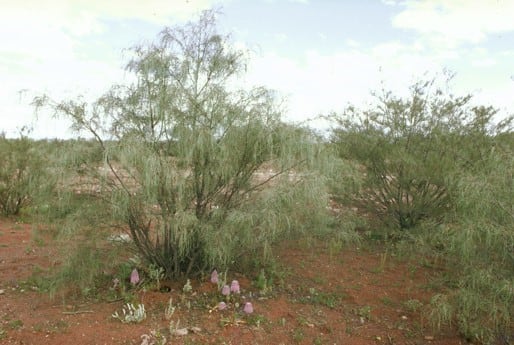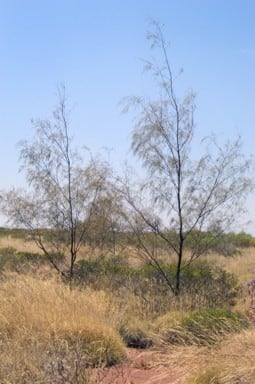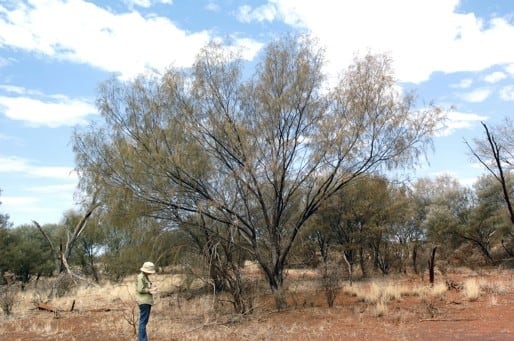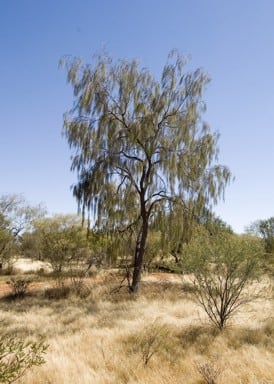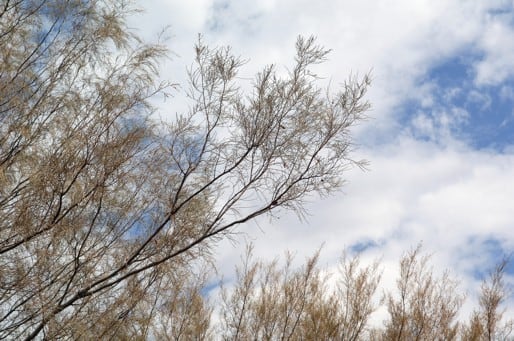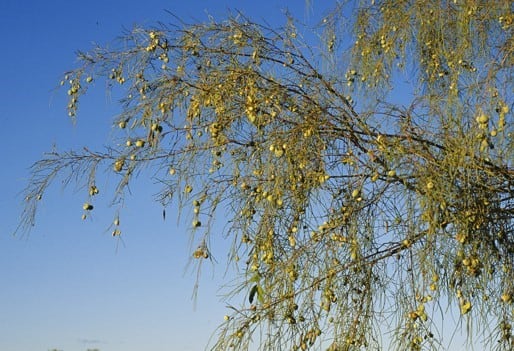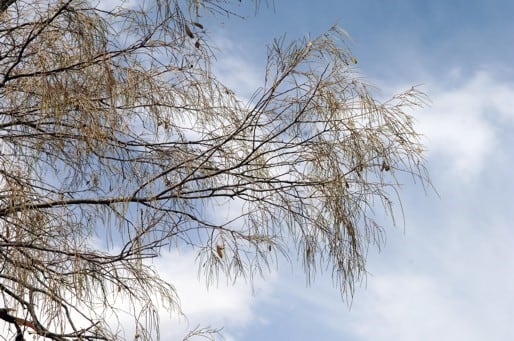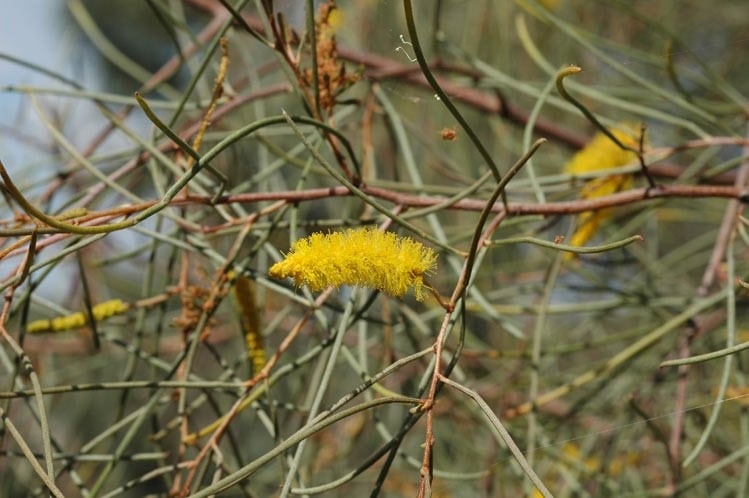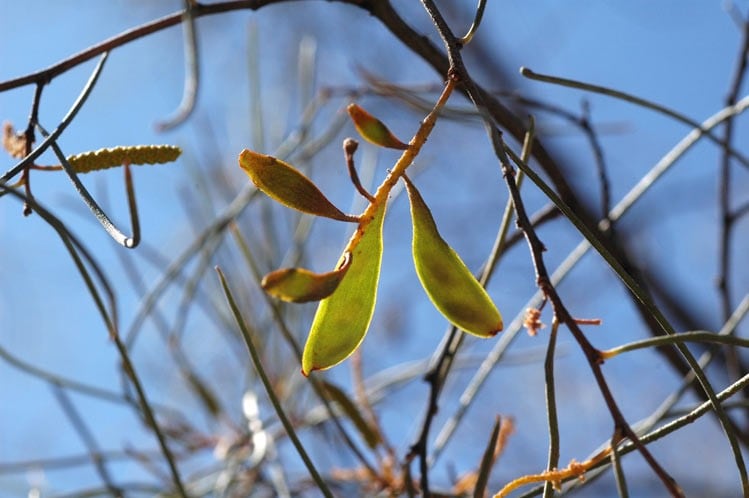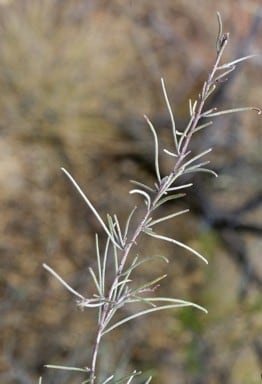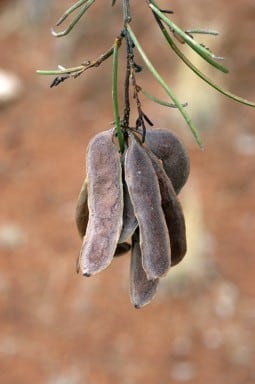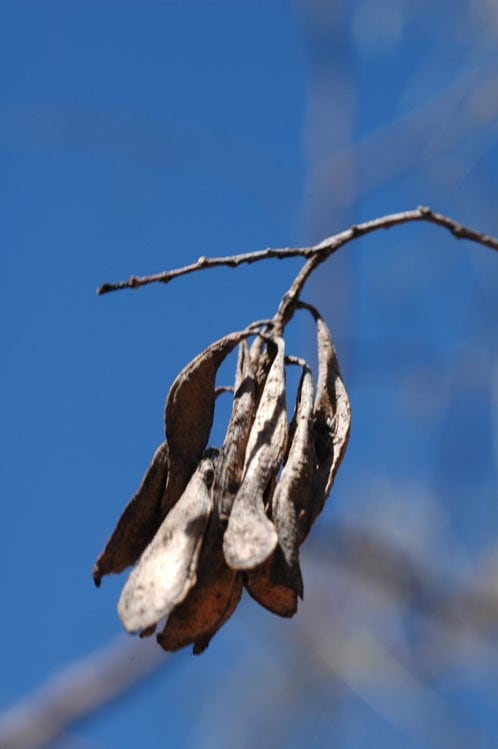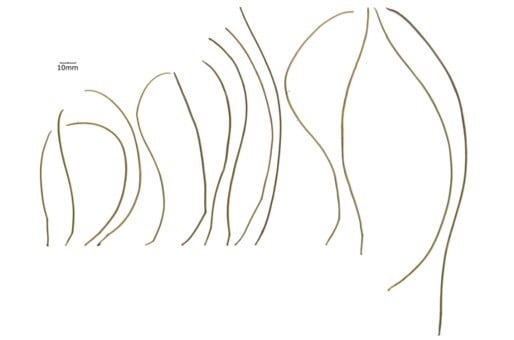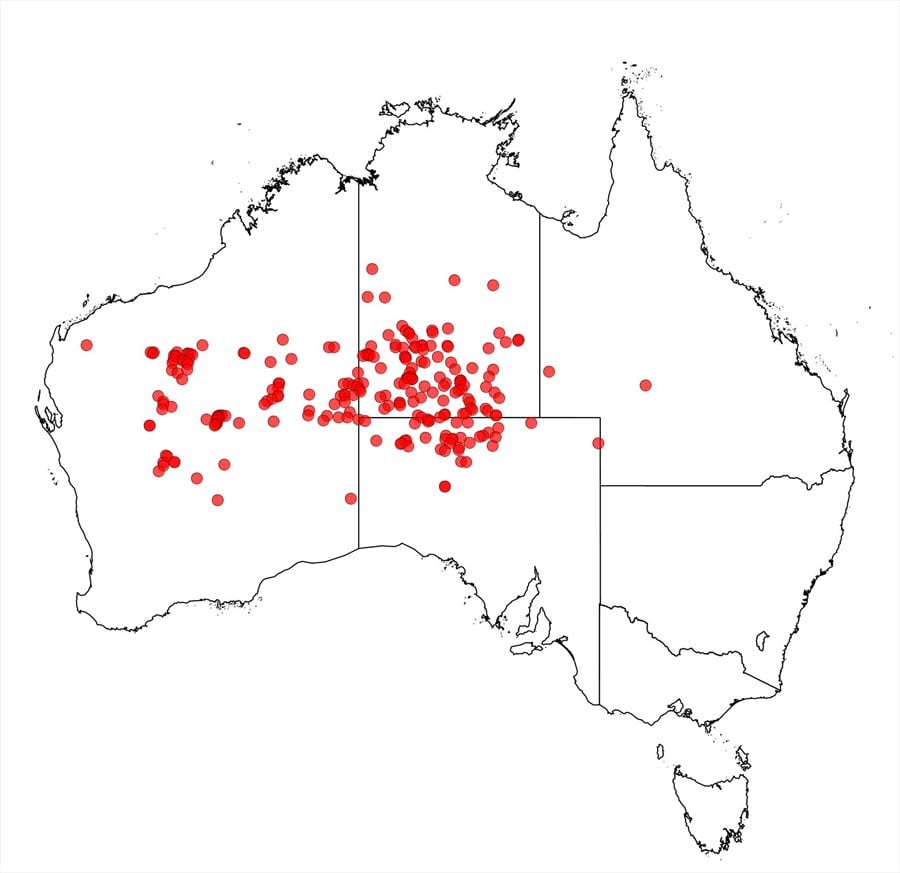Acacia paraneura Randell
WATTLE
Acacias of Australia
Common Name
Weeping Mulga
Family
Fabaceae
Distribution
Ranging from the Pilbara region, W.A. through the southern part of N.T. and north-eastern S.A., with outliers in central Qld, about 150 km WSW of Longreach.
Description
Graceful tree 4–10 m high with open and often wispy crown, the ultimate branchlets commonly pendulous or subpendulous. Branchlets white appressed-pubescent between red-brown, ribs which are not resinous or with a veneer of shiny, translucent resin; new growth resinous, red-brown to black (when dry) by glandular hairlets. Phyllodes commonly variously curved, sigmoid or sinuous, slender, terete to subterete, rarely flat, (6–) 8–20 (–23) cm long, c. 1 mm diam./wide, dull green to light grey-green, finely striate with longitudinal nerves, with somewhat loose silvery appressed hairs between nerves, glabrescent; gland normally 4–25 mm above pulvinus, phyllode often bent or swollen about gland. Inflorescences simple or rudimentary racemes; peduncles (4–) 5–12 (–15) mm long, red-glandular, pubescent; spikes 10–30 mm long. Flowers 5-merous; sepals spathulate, 0.8–1 mm long, free or united in basal ring, with red-glandular and hyaline hairs towards tips; corolla 1.5–1.8 mm long, usually less than twice as long as calyx. Pods normally oblong to narrowly oblong or obovate, flat, mostly 2–5 cm long, (6–) 8–12 (–16) mm wide including wings normally 1–2 mm wide, rather crustaceous, ±obscurely openly reticulate, brown to reddish or greyish brown, with minute, appressed hairs. Seeds oblique to transverse, oblong, 4–7 mm long, 2.5–4 mm wide; aril conspicuous, terminal, cupular, white.
Habitat
Habitat data are poor, but the species is recorded from sandy and gravelly soils along streams and outwashes from hills.
Specimens
W.A.: Little Sandy Desert, A.S.Mitchell 919 (DNA, PERTH); c. 2 km NE of Pass of Abercerrages, A.C.Kalotas 1632 (CANB, DNA, PERTH). N.T.: Tarlton Downs Stn, 5 km NW of Halfway Bore, P.K.Latz 12595 (AD, DNA, MEL). S.A.: Tallaringa Rd, 6 July 1967, S.A. Pastoral Board (AD). Qld: Valetta Dry Paddock, A.J.Emmott 430 (BRI).
Notes
Has horticultural potential on account of its attractive growth form. Indigenous people of the Pilbara used the dense wood from A. paraneura to make weapons and hunting tools; the seeds and immature pods were eaten and the roots used as fire sticks.
Short phyllode variants of A. paraneura that are discussed by B.R.Maslin & J.E.Reid, Nuytsia 22: 250 (2012) are provisionally now referred to A. pteraneura (including Figures 56A a-c on p. 247). This means that on herbarium material, one of the most reliable ways of distinguishing these two species is phyllode length: some or all greater than 10 cm long in A. paraneura and normally to 8 cm long in A. pteraneura (only rarely some reaching 10 cm in this species).
The relationship between A. paraneura and A. pteraneura requires further study. As noted by B.R.Maslin & J.E.Reid, Nuytsia 22: 258 (2012) these two species could perhaps be treated as subspecies of a single species; the differences between these taxa are discussed by Maslin & Reid (2012: 250).
The specimen B.R. Maslin 2273a cited by L.Pedley, Fl. Austral. 11B: 314 (2001), under A. paraneura is possibly a hybrid involving A. aptaneura and A. pteraneura, fide B.R.Maslin & J.E.Reid, loc. cit. A specimen collected by McDouall Stuart (1859) was cited by Mueller as A. aneura (Fragm. 4: 9, 1863). Acacia paraneura sometimes hybridizes with A. aptaneura and possibly A. macraneura.
Typically the branchlets and phyllodes are distinctively pendulous or subpendulous, but non-pendulous individuals do occur; the two forms are sometimes sympatric. Variation in gland position, phyllode length and pod size is discussed in B.R.Maslin & J.E.Reid, Nuytsia 22(4): 250 (2012). The combination of its habit, long usually terete phyllodes with gland removed from the pulvinus (phyllode bent and/or swollen at the gland) and the large, winged pods distinguishes the species.
A member of the ‘A. aneura group’ (Mulga) most closely related to A. pteraneura which has a smaller stature, non-pendulous branchlets and generally shorter phyllodes. However, as noted by B.R.Maslin & J.E.Reid, Nuytsia 22: 258 (2012), the relationship between these two species requires further study. Short phyllode forms of A. paraneura that were discussed by Maslin & Reid, Nuytsia 22(4): 250 (2012), are now provisionally referred to A. pteraneura (including fig. 56Aa-c on p. 247). This means that on herbarium material, one of the most reliable ways of distinguishing these two species is phyllode length: some or all greater than 10 cm long in A. paraneura and normally to 8 cm long in A. pteraneura (only rarely some reaching 10 cm in this species). Sterile specimens of A. paraneura can sometimes be confused with A. aptaneura (with which it is sometimes sympatric) that has phyllodes with gland closer to the pulvinus and not discernibly kinked at the gland.
FOA Reference
Data derived from Flora of Australia Volumes 11A (2001), 11B (2001) and 12 (1998), products of ABRS, ©Commonwealth of Australia
Author
Revised by B.R.Maslin
L.Pedley
This identification key and fact sheets are available as a mobile application:
URL: https://apps.lucidcentral.org/wattle/
© Copyright 2018. All rights reserved.
